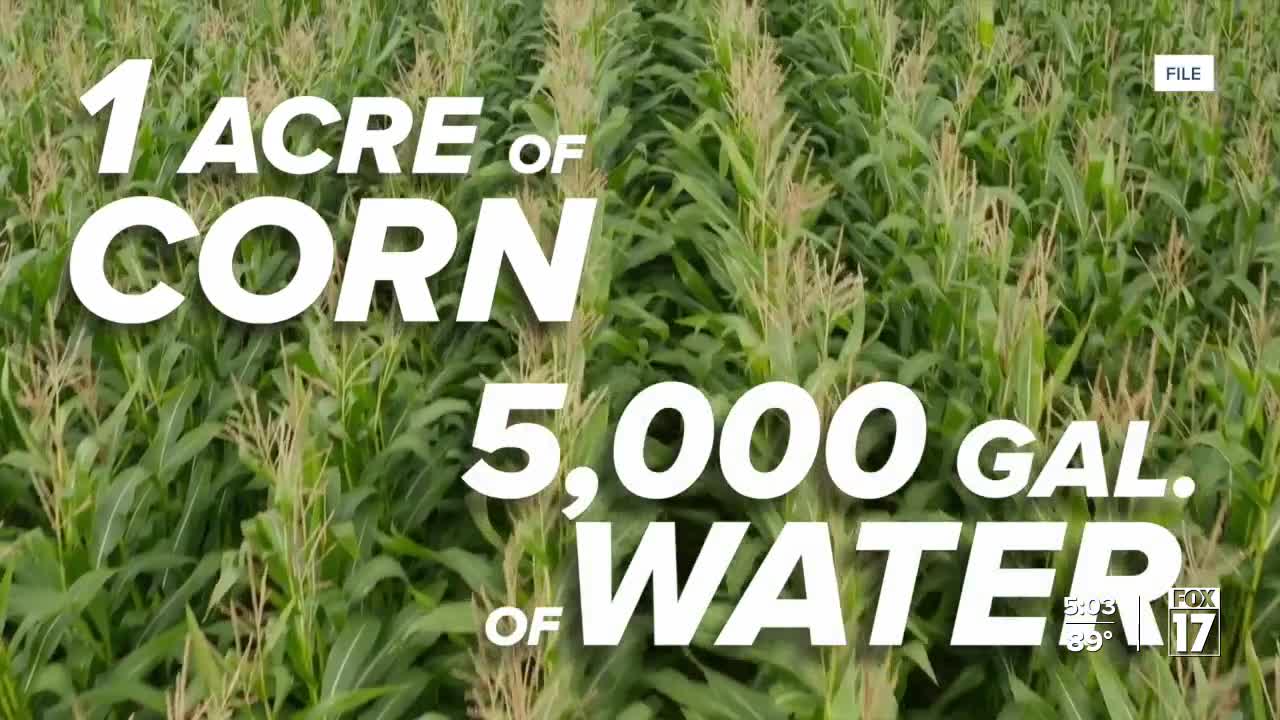ALGOMA TOWNSHIP, Mich. — Corn sweat.
Yes, the term for how the crop can drive up the humidity through a process called evapotranspiration is a thing.
"A real phenomenon, yes," said Tim Boring, the director of the Michigan Department of Agriculture and Rural Development (MDARD).
"Agriculture impacts all of us every day in a lot of different ways that we don't always think about," he said.
How much of a thing is corn sweat, though? Do Michigan's cornfields raise the humidity all across the state? Is the entire Midwest under the crop's sweltering, maize spell?
Boring says its effects are "pretty localized."
"It's not going to travel very far," he said. "If you're downtown Grand Rapids, if you're in an urban environment, you're not going to really see a pronounced effect."
Still, during peak production, a single acre of corn can transpire upwards of 5,000 gallons of water a day, meaning people who live by an abundance of the crop will likely see a "bump" in humidity due to corn sweat.
"The name certainly invokes some imagery, right?" Boring said.
As part of MDARD's purpose to assure food safety and sustain environmental stewardship, corn sweat could become a "little bit" more pronounced as the department furthers its regenerative agriculture program.
"We really want to focus on boosting the water holding capacity of soil so that our fields are more resilient to these droughts and high precipitation events," Boring said.
Then, when fields are better able to retain water, its crops will draw more of it from the soil, leading to increased corn sweat.
As for when West Michigan will see an increase in sweet corn, Boring says peak season is near, so ready the butter and salt!












